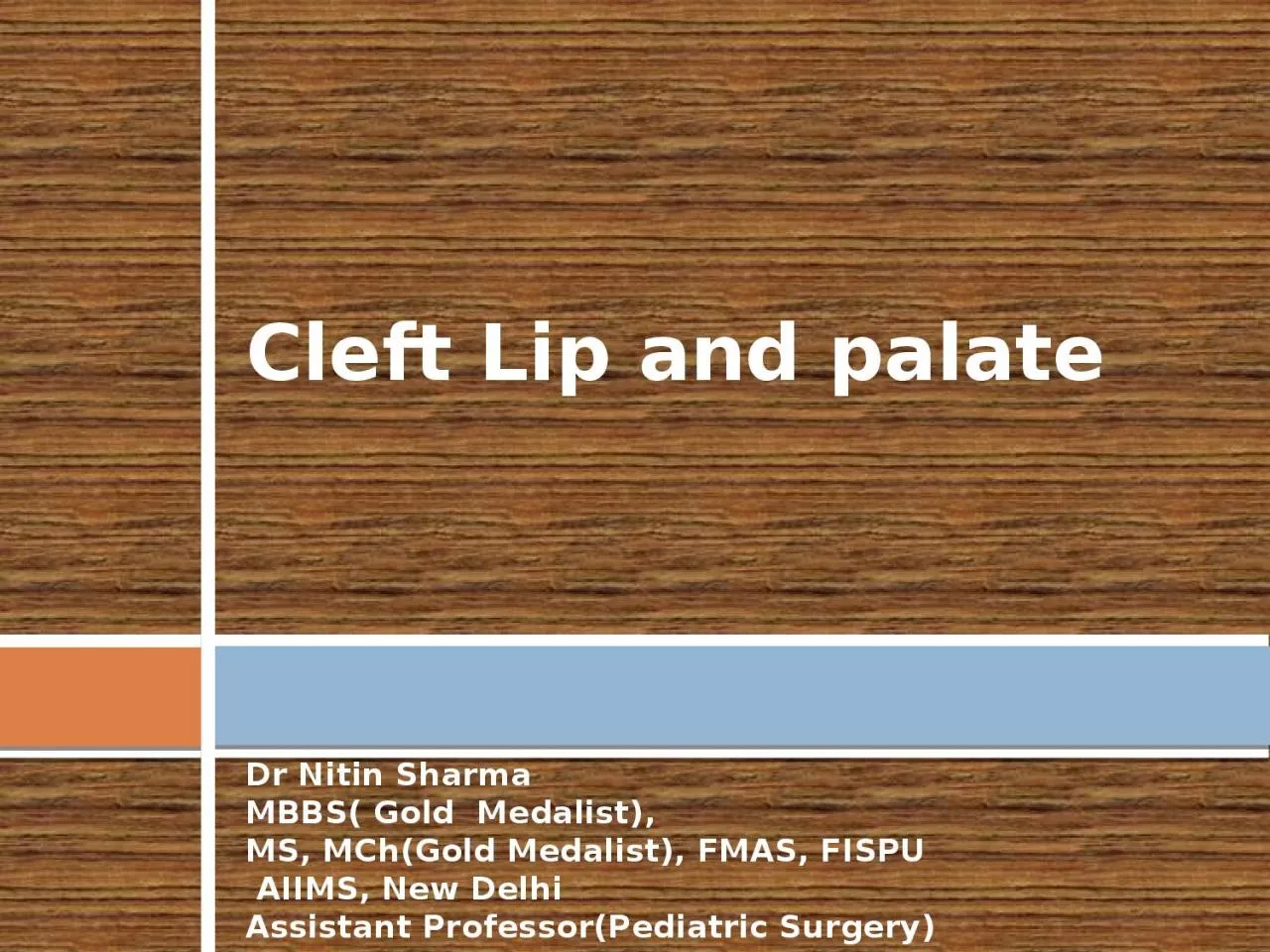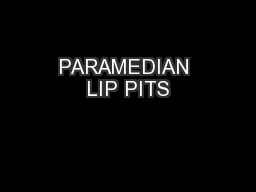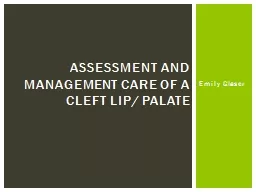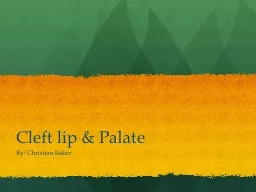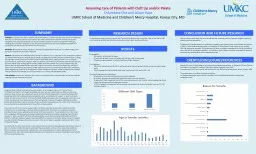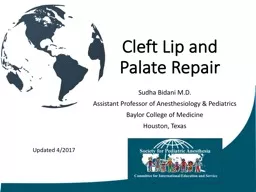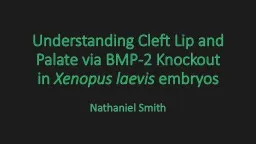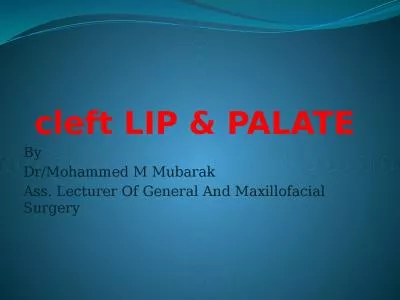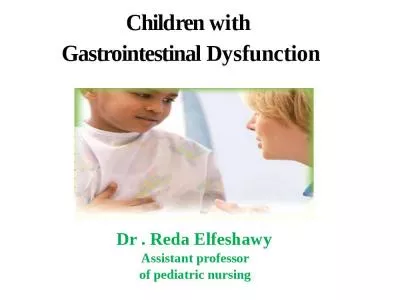PPT-Cleft Lip and palate Dr
Author : cady | Published Date : 2024-01-13
Nitin Sharma MBBS Gold Medalist MS MCh Gold Medalist FMAS FISPU AIIMS New Delhi Assistant ProfessorPediatric Surgery PRESENTATIONS Is it possible to be normal
Presentation Embed Code
Download Presentation
Download Presentation The PPT/PDF document "Cleft Lip and palate Dr" is the property of its rightful owner. Permission is granted to download and print the materials on this website for personal, non-commercial use only, and to display it on your personal computer provided you do not modify the materials and that you retain all copyright notices contained in the materials. By downloading content from our website, you accept the terms of this agreement.
Cleft Lip and palate Dr: Transcript
Download Rules Of Document
"Cleft Lip and palate Dr"The content belongs to its owner. You may download and print it for personal use, without modification, and keep all copyright notices. By downloading, you agree to these terms.
Related Documents

